Australia continues to be one of the most sought-after destinations for migrants worldwide, offering a wealth of opportunities for skilled professionals, students, and families seeking a new life Down Under. Achieving Permanent Residency (PR) in Australia is a significant milestone that opens doors to a wide range of benefits, including the right to live, work, and study in Australia indefinitely, access to healthcare and social security, and eventually, the possibility of Australian citizenship.
At Blueprint Education and Migration, we understand that the journey to obtaining PR can be complex and daunting. That’s why we are here to guide you through the various pathways available, ensuring you make informed decisions that align with your goals.
Skilled Migration Pathways
Australia’s Skilled Migration program is designed to attract individuals with skills in demand across the country. There are several key pathways under this program:
1. Skilled Independent Visa (Subclass 189)
The Subclass 189 visa is a points-tested visa for skilled workers who are not sponsored by an employer, state, or territory. Applicants must be invited to apply based on their Expression of Interest (EOI) submitted through SkillSelect. This visa is highly competitive, with points awarded for factors such as age, English proficiency, work experience, and education.
2. Skilled Nominated Visa (Subclass 190)
The Subclass 190 visa requires nomination by an Australian state or territory. In addition to meeting the points requirements, applicants must fulfill the specific criteria set by the nominating state or territory, which may include having skills in an occupation on their state-specific Skilled Occupation List.
3. Skilled Work Regional (Provisional) Visa (Subclass 491)
The Subclass 491 visa is a provisional visa leading to PR, targeting those willing to live and work in regional Australia. It requires either state or territory nomination or sponsorship by an eligible family member residing in a designated regional area. After living and working in the regional area for at least three years, visa holders can apply for the Permanent Residence (Skilled Regional) visa (Subclass 191).
Employer-Sponsored Pathways
For those with an Australian employer willing to sponsor their stay, employer-sponsored visas offer a direct pathway to PR:
1. Temporary Skill Shortage (TSS) Visa (Subclass 482)
The TSS visa allows employers to fill positions with skilled workers from overseas temporarily. Certain TSS visa holders may be eligible for PR through the Employer Nomination Scheme (ENS) visa (Subclass 186) after meeting specific requirements, including working for the same employer for a certain period.
2. Employer Nomination Scheme (ENS) Visa (Subclass 186)
The Subclass 186 visa is a PR visa for skilled workers who are nominated by their employer. It has three streams: the Direct Entry stream, the Labour Agreement stream, and the Temporary Residence Transition stream. Eligibility depends on factors such as the applicant’s skills, work experience, and whether they have held a TSS visa.
3. Regional Sponsored Migration Scheme (RSMS) Visa (Subclass 187)
The RSMS visa is for skilled workers nominated by an employer in regional Australia. Similar to the ENS visa, it provides PR to those meeting specific criteria, though it requires the applicant to work in a designated regional area.
Family-Sponsored Pathways
Family ties can also open doors to PR in Australia. These pathways are designed for individuals who have family members in Australia willing to sponsor them:
1. Partner Visa (Subclass 820/801 and 309/100)
If you are in a genuine relationship with an Australian citizen, PR holder, or eligible New Zealand citizen, you may be eligible for a Partner Visa. The process involves initially applying for a temporary visa (Subclass 820 or 309), with PR granted after two years if the relationship continues.
2. Parent Visa (Subclass 103 and 143)
For parents of Australian citizens or PR holders, the Parent Visa allows for family reunification. While these visas have long processing times, the Contributory Parent Visa (Subclass 143) offers a faster pathway at a higher cost.
3. Child Visa (Subclass 101 and 802)
Children of Australian citizens, PR holders, or eligible New Zealand citizens can apply for PR through the Child Visa, allowing them to live in Australia permanently with their parents.
Business and Investment Pathways
Entrepreneurs and business owners have a pathway to Australian Permanent Residency through the following option:
Subclass 890 Business Owner Visa
The Subclass 890 Business Owner Visa is designed for individuals who own and manage a business in Australia. This visa grants you the right to stay in Australia indefinitely, allowing you to continue operating your business and enjoy the benefits of Permanent Residency. To be eligible, you must hold a qualifying visa and meet specific business-related requirements. This visa is ideal for those who have already established a successful business in Australia and wish to make it their permanent home.
Conclusion
Achieving Permanent Residency in Australia is a significant step towards securing a prosperous future in one of the world’s most vibrant and diverse countries. With multiple pathways available, it’s crucial to choose the one that aligns with your skills, goals, and circumstances.
At Blueprint Education and Migration, we specialize in guiding clients through this complex process. Our expert team is committed to providing personalized advice and support to help you navigate the PR pathways with confidence. Whether you’re a skilled professional, business investor, or looking to reunite with family in Australia, we are here to help you make your Australian dream a reality.
For more information or to discuss your PR options, contact Blueprint Education and Migration today. Your future in Australia starts here!

